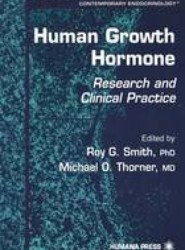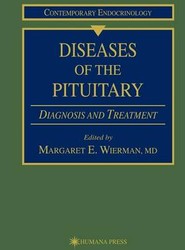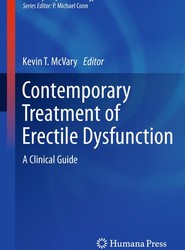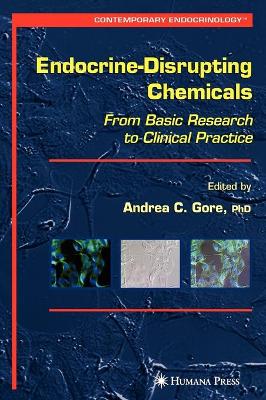(To see other currencies, click on price)
MORE ABOUT THIS BOOK
Contents:
1 Neuroendocrinology.- 1.1. Introduction.- 1.2. Biosynthesis of CNS Peptides.- 1.2.1. ACTH and Related Peptides in Brain.- 1.2.2. Vasopressin, Oxytocin, and Neurophysins.- 1.2.3. Somatostatin.- 1.3. Extrahypothalamic Localization of "Hypothalamic Releasing Factors" and Peptides.- 1.3.1. ACTH.- 1.3.2. Vasopressin.- 1.3.3. Somatostatin.- 1.3.4. Gonadotropin-Releasing Hormone (LHRH).- 1.3.5. Thyrotropin-Releasing Hormone.- 1.4. Possible Functional Homeostatic Significance of Brain Peptides.- 1.4.1. Cognitive Behavior.- 1.4.2. Effects on Feeding.- 1.5. Possible Functions of Opioid-like Peptides.- 1.5.1. On Prolactin Release.- 1.5.2. In Clinical Syndromes.- 1.6. Results of Transsphenoidal Hypophysectomy for Hyperfunctioning Pituitary Adenomas.- 1.6.1. Acromegaly.- 1.6.2. Prolactinomas.- 1.6.3. Cushing's Disease.- References.- 2 Prolactin and Growth Hormone in Health and Disease.- 2.1. Introduction.- 2.2. Prolactin.- 2.2.1. The Prolactin Gene and mRNA.- 2.2.2. Prolactin Molecular Heterogeneity.- 2.2.3. Amniotic Fluid Prolactin.- 2.2.4. Pituitary Prolactin Secretion in Pregnancy.- 2.2.5. Physiologic Secretion of Prolactin and Functional Abnormalities.- 2.2.6. Hyperprolactinemia in Uremia.- 2.2.7. Prolactin Effects on Androgens.- 2.2.8. Effects of Pharmacologic Agents on Prolactin Secretion.- 2.2.9. Provocative Tests of Prolactin Secretion.- 2.2.10. Etiology of Prolactinomas.- 2.2.11. Hypothalamic Function Associated with Prolactinoma.- 2.2.12. Clinical Manifestations of Prolactinomas.- 2.2.13. Diagnosis of Prolactinomas.- 2.2.14. Pituitary Function in Patients with Prolactinoma.- 2.2.15. Treatment with Dopaminergic Agents.- 2.2.16. Neurosurgical Treatment.- 2.3. GH.- 2.3.1. GH Genes and mRNA.- 2.3.2. GH Heterogeneity.- 2.3.3. Homologous Radioreceptor Assays for hGH.- 2.3.4. GH Regulation by Somatostatin.- 2.3.5. GH Regulation by Somatocrinin (GHRH).- 2.3.6. GH Regulation in Men.- 2.3.7. GH Effects on Calcium and Phosphorus Metabolism.- 2.3.8. Pituitary Pathology in Acromegaly.- 2.3.9. Control of GH Secretion in Acromegaly.- 2.3.10. Disturbed Organ Physiology in Acromegaly.- 2.3.11. Diabetes and Acromegaly.- 2.3.12. Treatment of Acromegaly.- 2.4. Hypopituitarism.- 2.4.1. Etiology.- 2.4.2. Familial Isolated GH Deficiency.- 2.4.3. Hormonal Studies in Hypopituitary Children.- 2.4.4. GH Treatment.- 2.4.4.1. GH Refractoriness.- 2.5. Somatomedins.- 2.5.1. Structure.- 2.5.2. Measurement of Somatomedins.- 2.5.3. Somatomedin-Binding Proteins of Serum.- 2.5.4. Variation in Normal Serum Somatomedin Levels.- 2.5.5. Somatomedin Levels in Malnutrition and Uncontrolled Diabetes Mellitus.- 2.5.6. Somatomedins in Chronic Renal Failure.- 2.5.7. Somatomedin Levels in Hypopituitarism.- References.- 3 The Thyroid.- 3.1. Hypothalamic-Pituitary-Thyroid Interrelationships.- 3.2. Thyroid Hormone and Thyroglobulin Synthesis and Release.- 3.3. Peripheral Metabolism, Action, and Serum Protein Binding of the Thyroid Hormones.- 3.4. Fetal and Neonatal Thyroid Function.- 3.5. Hyperthyroidism.- 3.6. Hypothyroidism.- 3.7. Nontoxic Goiter.- 3.8. Thyroid Carcinoma.- 3.9. Miscellaneous.- References.- 4 The Testis.- 4.1. Introduction.- 4.2. Intrauterine and Neonatal Function.- 4.2.1. Embryonic Sex Differentiation.- 4.2.1.1. Normal Controls.- 4.2.1.2. Defects in Fetal Sex Differentiation.- 4.2.2. Testicular Function in Childhood.- 4.3. Puberty.- 4.4. Adult Physiology.- 4.4.1. The Hypothalamus and Pituitary.- 4.4.2. The Testis.- 4.4.2.1. Steroidogenesis.- 4.4.2.2. Spermatogenesis.- 4.4.2.3. Effect of Age.- 4.5. Adult Pathophysiology.- 4.5.1. Gonadotropin Deficiencies.- 4.5.2. The Testis.- 4.5.2.1. Steroidogenesis.- 4.5.2.2. Tubular Defects.- 4.6. Effect of Systemic Disease on Gonadal Function.- 4.7. Testicular Tumors.- 4.8. Miscellaneous.- 4.8.1. Gynecomastia.- 4.8.2. Impotence.- References.- 5 Aldosterone and Renin.- 5.1. A Reexamination and Further Definition of Congenital Adrenal Hyperplasia through the Examination of Steroids in the Mineralocorticoid Hormone Pathways.- 5.1.1. 21-Hydroxylase Deficiency [Simple Virilizing (SV), Nonsalt-Losing, and Salt-Losing (SL) Types].- 5.1.2. 11?-Hydroxylase Deficiency.- 5.1.3. 17?-Hydroxylase Deficiency.- 5.2. The Hypokalemic and Hypertensive Syndromes with Suppressed Renin and Aldosterone Production.- 5.2.1. Defect in Terminal (or Peripheral) Steroid Metabolism.- 5.2.2. Glucocorticoid Insensitivity.- 5.3. Primary Hyperaldosteronism.- 5.3.1. Primary Aldosteronism.- 5.3.2. Idiopathic Hyperaldosteronism (IHA, Adrenal Hyperplasia).- 5.3.3. Glucocorticoid-Remediable Hyperaldosteronism (GRHA).- References.- 6 Sympathoadrenal System.- 6.1. Introduction.- 6.2. Sympathetic Responses during Cold Exposure: Regulation of Nonshivering Thermogenesis.- 6.2.1. Role of the Sympathetic Nervous System in Temperature Maintenance during Cold Exposure.- 6.2.2. Sympathetic Activation in the Cold.- 6.2.2.1. Adrenal Medulla.- 6.2.2.2. Central Regulation.- 6.2.3. Components of the Sympathetic Response.- 6.2.4. Nonshivering Thermogenesis.- 6.2.4.1. "Adaptive" or "Regulatory" Thermogenesis.- 6.2.4.2. Thermogenic Effects of Catecholamines.- 6.2.4.3. Role of Brown Adipose Tissue in Nonshivering Thermogenesis.- 6.2.5. Substrate Mobilization.- 6.2.5.1. Lipid Metabolism.- 6.2.5.2. Carbohydrate Metabolism.- 6.2.5.3. Role of Insulin and Effects on Lipoprotein Lipase.- 6.2.6. Cardiovascular System.- 6.2.6.1. Vascular Responsiveness to NE.- 6.2.6.2. Cold Acclimation.- 6.2.7. Summary: The Role of the Sympathetic Nervous System and the Adrenal Medulla in the Mammalian Defense against Cold Exposure.- 6.3. Dietary Thermogenesis.- 6.3.1. Luxusconsumption: Adaptive Changes in Thermogenesis in Relation to Changes in Dietary Intake.- 6.3.2. Effect of Dietary Intake on Sympathoadrenal Activity.- 6.3.2.1. Suppression of Sympathetic Activity during Fasting and Caloric Restriction.- 6.3.2.2. Stimulation of Sympathetic Nervous System Activity and Thermogenesis during Feeding and Excessive Caloric Intake.- 6.3.3. CNS Assessment of Nutritional Status: The Signal That Couples Changes in Dietary Intake with Changes in Sympathetic Activity.- 6.3.3.1. Possible Role of Glucose and Insulin.- 6.3.3.2. Visceral Afferents.- 6.3.4. Summary: Adaptive Thermogenesis.- 6.4. Pheochromocytoma.- 6.4.1. Usefulness of Plasma Catecholamine Measurements in the Diagnosis of Pheochromocytoma.- 6.4.1.1. Diagnostic Considerations.- 6.4.1.2. Plasma Catecholamines.- 6.4.2. Localization of Pheochromocytoma.- 6.4.2.1. CT-Scan.- 6.4.2.2. Venous Sampling and Scintographic Localization.- References.- 7 Parathyroid Hormone and Calcitonin.- 7.1. Introduction.- 7.2. Chemistry, Synthesis, and Secretion.- 7.3. Control of Secretion.- 7.3.1. Control by Calcium.- 7.3.2. Control by Catecholamines.- 7.3.3. CNS Control.- 7.3.4. Vitamin D.- 7.3.5. Miscellaneous Effectors and Integrative Speculation.- 7.4. Metabolism.- 7.5. Physiology of PTH and Its Evolution.- 7.5.1. PTH and the Skeleton.- 7.5.2. PTH and the Kidney.- 7.5.2.1. Calcium Clearance.- 7.5.2.2. Phosphate Clearance.- 7.5.2.3. Glomerular Filtration.- 7.5.3. PTH and Vitamin D.- 7.6. Cellular Response to PTH.- 7.7. Hyperparathyroidism.- 7.7.1. Nature of Hyperparathyroidism.- 7.7.2. Clinical Characteristics.- 7.7.2.1. Familial Hypocalciuric Hypercalcemia.- 7.7.2.2. PTH as the "Uremic toxin".- 7.7.3. Diagnosis.- 7.7.4. Treatment.- 7.7.5. Renal Osteodystrophy.- 7.8. Hypoparathyroidism.- 7.8.1. Presentation and Diagnosis.- 7.8.2. Pseudohypoparathyroidism.- 7.8.3. Treatment.- 7.9. Calcitonin.- 7.9.1. Origins, Embryology, Structure, and Metabolism.- 7.9.2. Assay.- 7.9.3. Secretion and Its Control.- 7.9.4. Does Calcitonin Have a Physiologic Role in Man?.- 7.9.5. Calcitonin as a Tumor Marker.- 7.9.6. Therapeutic Uses of Calcitonin.- 7.9.6.1. Paget's Disease.- 7.9.6.2. Hypercalcemia.- 7.9.6.3. Osteoporosis.- References.- 8 Ectopic Hormone Syndromes.- 8.1. Etiology and Mechanisms of Ectopic Hormone Production.- 8.2. Recent Developments in Specific Hormone Syndromes.- 8.2.1. Ectopic Production of Corticotropin.- 8.2.2. Ectopic Production of Lipotropin.- 8.2.3. Ectopic Production of GH and GHRH.- 8.2.4. Ectopic Production of Gonadotropin.- 8.2.5. Ectopic Production of Thyrotropin.- 8.2.6. Ectopic Production of Vasopressin.- 8.2.7. Ectopic Production of Nonsuppressible Insulin-like Activity.- 8.2.8. Ectopic Production of Calcium-Mobilizing Substances.- 8.2.9. Ectopic Production of Calcitonin.- 8.2.10. Metabolic Bone Diseases Associated with Tumors.- 8.2.11. Ectopic Production of Tumors Associated with Diarrhea.- 8.2.11.1. Gastrointestinal Hormones.- 8.2.11.2. Glucagon-Producing Tumors.- 8.2.11.3. Somatostatin-Producing Tumors.- 8.2.12. Disorders Due to Ectopic Erythropoietin Production.- 8.2.13. Ectopic Production of Renin.- 8.2.14. Ectopic Production of Other Proteins by Tumors.- References.- 9 Vasopressin.- 9.1. Introduction.- 9.2. Anatomy.- 9.3. Biosynthesis.- 9.4. Secretion.- 9.4.1. Osmoregulation.- 9.4.2. Baroregulation.- 9.4.3. Nociceptive Influences.- 9.4.4. Emetic Influences.- 9.4.5. Glucopenic Stimuli.- 9.4.6. Hypoxic Stimuli.- 9.4.7. Pharmacological Influences.- 9.4.7.1. Opiates.- 9.4.7.2. Nicotine.- 9.4.7.3. Other Drugs with Antidiuretic Effects.- 9.4.7.4. Drugs with Diuretic Effects.- 9.4.7.5. Miscellaneous.- 9.5. Biological Actions.- 9.5.1. Renal.- 9.5.1.1. cAMP.- 9.5.1.2. Prostaglandins.- 9.5.1.3. Kinins and Kallikreins.- 9.5.1.4. Calcium and Calmodulin.- 9.5.1.5. Somatostatin.- 9.5.1.6. Vasopressin Antagonists.- 9.5.1.7. Other Factors.- 9.5.2. Vascular.- 9.5.3. Extrarenal, Extravascular.- 9.6. Pathology.- 9.6.1. Deficient Secretion.- 9.6.1.1. Neurohypophyseal Damage.- 9.6.1.2. Osmoreceptor Damage.- 9.6.2. Deficient Renal Response.- 9.6.3. Excessive Secretion.- 9.6.3.1. Inappropriate Antidiuresis.- 9.6.3.2. Andrenal Insufficiency.- 9.6.3.3. Edema-Forming States.- 9.6.3.4. Diabetes Mellitus.- 9.6.3.5. Hypertension.- References.
PRODUCT DETAILS
Publisher: Springer (Springer-Verlag New York Inc.)
Publication date: December, 2012
Pages: 460
Weight: 730g
Availability: Available
Subcategories: Endocrinology
From the same series



































































































